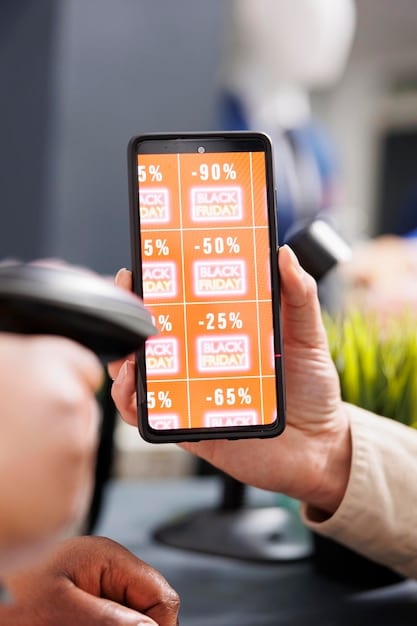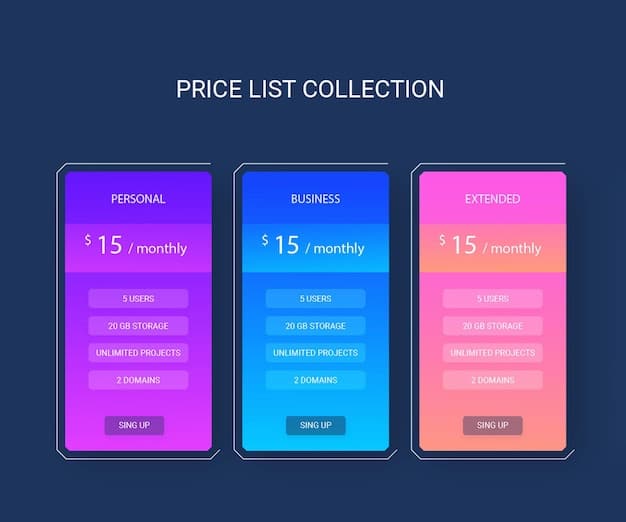How to Spot Price Gouging: Price Comparison Tools & 2025 US Laws

Price gouging, the unethical practice of raising prices excessively during emergencies, can be identified using price comparison tools to monitor market fluctuations and understand updated US laws in 2025 designed to protect consumers.
During times of crisis, understanding how to identify price gouging with price comparison tools: updated US laws for 2025 is essential to protect consumers from unfair and exploitative pricing practices. This guide will explore effective methods and legal frameworks to combat such issues.
Understanding Price Gouging: What It Is and Why It Matters
Price gouging is a significant concern, particularly during emergencies when demand for essential goods surges. It’s important to understand the nuances and implications of this practice to protect yourself and your community.
Defining Price Gouging
Price gouging occurs when sellers drastically increase prices of essential goods, services, or commodities to a level much higher than considered reasonable. This typically happens after a demand or supply shock.
Why Price Gouging Matters
Price gouging exploits vulnerable populations during crises. It hinders access to vital resources and undermines public trust.
- Increases financial strain on individuals and families.
- Creates distrust in markets and businesses.
- Deters disaster recovery efforts.
Price gouging discourages ethical behavior and drives away responsible businesses.
In conclusion, price gouging is not only unethical but detrimental to society. Recognizing it and taking preventive steps is crucial.
The Role of Price Comparison Tools in Identifying Gouging
Price comparison tools can be powerful for detecting price gouging by allowing consumers to quickly assess prices across different retailers. Real-time insight into pricing trends makes it easier to identify irregularities and potential exploitation.
How Price Comparison Tools Work
Price comparison tools gather and display prices for the same items from multiple sources. This enables easy comparisons and quicker identification of unusually high prices.
Features to Look for in a Comparison Tool
- Real-time price tracking
- Historical price data
- Alerting systems for price changes

Utilizing these tools provides transparency and empowers consumers to make informed purchasing decisions, avoiding overpriced products from opportunistic sellers during critical times.
Updated US Laws on Price Gouging: What to Expect in 2025
Understanding the legal landscape is crucial in the fight against price gouging. Updated laws aim to strengthen consumer protection and impose stricter penalties on offenders.
Overview of Existing Federal and State Laws
Currently, price gouging laws primarily exist at the state level, varying significantly in scope and enforcement. There’s no comprehensive federal law specifically addressing price gouging.
Anticipated Changes and Enhancements in 2025
Several states are considering updates to their legislation to broaden the definitions of essential items and increase penalties for price gouging violations. Increased cooperation between state attorneys general is also expected.
- Expanded definitions of “essential goods and services.”
- Increased fines and penalties for violations.
- Enhanced enforcement mechanisms at the state level.
Legislative changes are aimed at closing existing legal loopholes and creating a more robust framework to deter exploitative pricing tactics.
These modifications are targeted at affording greater protections to consumers when they are most susceptible to market manipulations.
Practical Strategies for Consumers: How to Use Tools and Laws
Consumers can take proactive steps to protect themselves from price gouging by combining informed purchasing practices with a knowledge of applicable laws.
Step-by-Step Guide to Using Price Comparison Tools
Begin by identifying essential products you’re likely to need during emergencies. Track their prices regularly and set alerts for sudden increases.
Filing a Complaint: When and How
If you suspect price gouging, document the price, product, and seller information. Contact your state attorney general or consumer protection agency to file a formal complaint.

By diligently reporting suspected instances, you contribute to holding offending parties accountable and protecting other consumers.
Being an informed and vigilant consumer plays a key role in deterring unethical pricing behaviors.
The Ethics Behind Pricing: Balancing Supply and Demand
Determining what constitutes unethical pricing involves navigating the balance between market forces and fair treatment of consumers. Ethical considerations are vital in assessing pricing practices during emergencies.
Understanding Supply and Demand Dynamics
In times of crisis, demand often outstrips supply, leading to price increases. While some price adjustments are reasonable, excessive hikes are exploitative.
Ethical Considerations for Businesses
- Companies should prioritize societal well-being over short-term profits.
- Transparency in pricing is critical.
- Maintaining reasonable profit margins during emergencies builds trust.
Responsible pricing during emergencies should reflect a commitment to serving the community’s needs while preserving ethical standards.
Future Trends in Price Gouging Detection and Regulation
The ongoing evolution of technology and regulation holds promise for more effective detection and prevention of price gouging. Innovations in AI and data analytics are expected to play a significant role going forward.
Emerging Technologies in Price Monitoring
Artificial intelligence (AI) and machine learning (ML) can automate the monitoring of online prices and detect anomalies indicative of price gouging.
Potential Policy and Legislative Changes
Increased federal involvement and standardization of state laws could create a more unified approach to addressing price gouging nationwide.
These collective developments promise enhanced protection and a more equitable marketplace for consumers.
| Key Point | Brief Description |
|---|---|
| 🚨 Identify Price Gouging | Recognize inflated prices on essential goods during emergencies. |
| 🔎 Use Comparison Tools | Monitor price variations across retailers for quick detection. |
| 🏛️ Know Updated Laws | Stay informed about 2025 US price gouging laws for consumer protection. |
| 📝 Report Violations | File complaints with your state attorney general or consumer agency. |
Frequently Asked Questions (FAQ)
▼
Price gouging is defined as increasing prices on essential goods or services to an unfair level during a declared emergency. Laws vary at the state level and often involve a significant price increase compared to pre-emergency levels.
▼
Commonly protected items include food, water, fuel, medicine, and other essential supplies necessary for public health and safety. The specific list of protected items may be expanded during a declared emergency.
▼
These tools provide a quick and efficient way to compare prices across multiple retailers, making it easier to spot unusually high or inflated prices on essential goods during times of increased demand.
▼
Document the price, the item, and the seller’s information. Then, contact your state attorney general or local consumer protection agency to file a complaint. Providing evidence will improve the validity of your claim.
▼
Penalties vary by state and can include fines, civil penalties, and legal injunctions. Repeat offenders may face higher fines and the potential for criminal charges in certain jurisdictions.
Conclusion
In conclusion, understanding how to identify price gouging with price comparison tools: updated US laws for 2025 empowers consumers to protect themselves during times of crisis. By staying informed and utilizing the resources available, we can collectively combat unethical pricing practices and foster a fairer marketplace.





